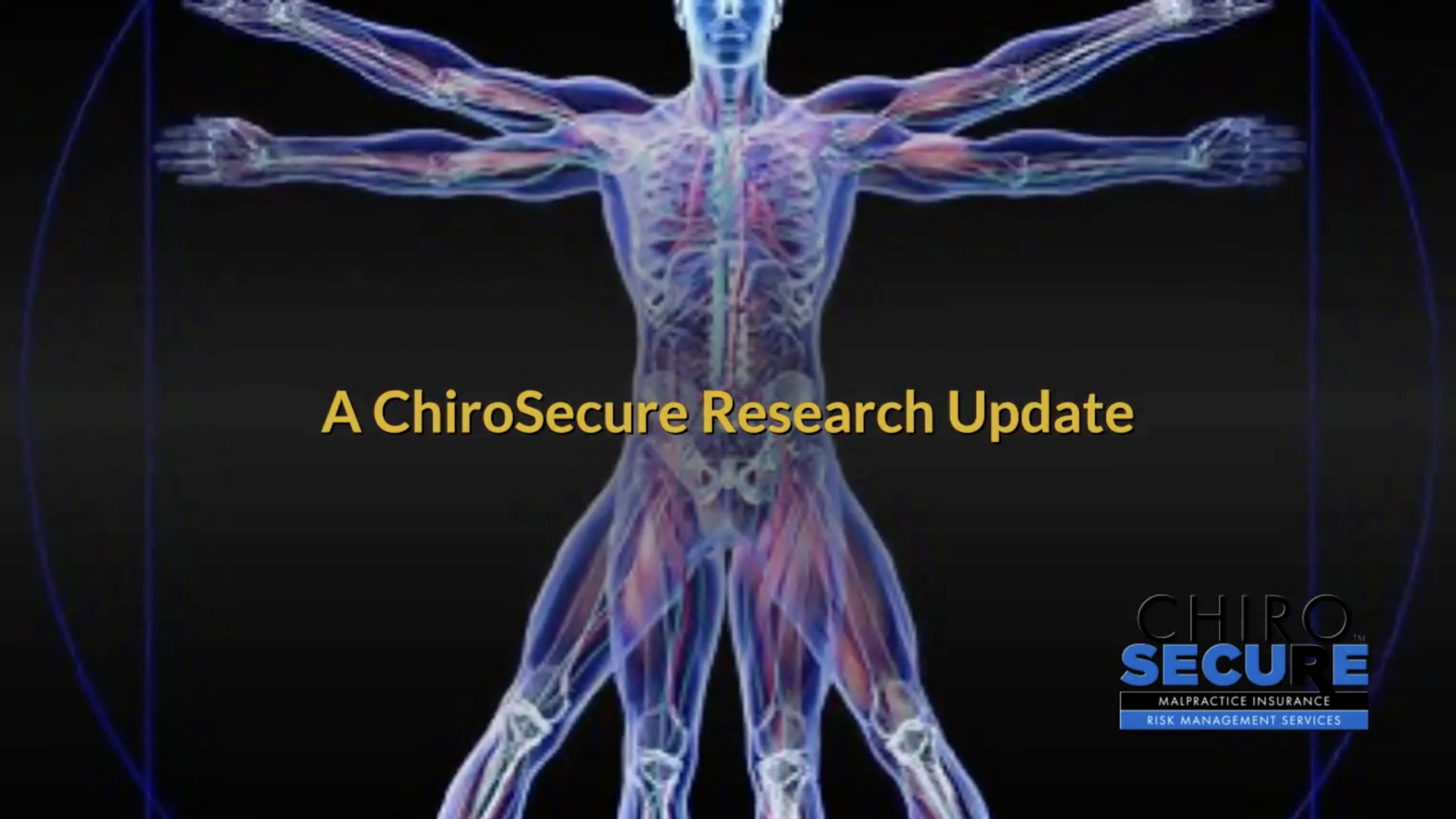A ChiroSecure Research Update
Magnetic resonance imaging zygapophyseal joint space changes (gapping) in low back pain patients following spinal manipulation and side-posture positioning: a randomized controlled mechanisms trial with blinding
ABSTRACT:
The purpose of this study was to quantify lumbar zygapophyseal (Z) joint space separation (gapping) in low back pain (LBP) subjects after spinal manipulative therapy (SMT) or side-posture positioning (SPP).
DISCUSSION:
This was a controlled mechanisms trial with randomization and blinding. Acute LBP subjects (N = 112; four n = 28 magnetic resonance imaging [MRI] protocol groups) had 2 MRI appointments (initial enrollment and after 2 weeks of chiropractic treatment, receiving 2 MRI scans of the L4/L5 and L5/S1 Z joints at each MRI appointment. After the first MRI scan of each appointment, subjects were randomized (initial enrollment appointment) or assigned (after 2 weeks of chiropractic treatment appointment) into SPP (non-manipulation), SMT (manipulation), or control MRI protocol groups. After SPP or SMT, a second MRI was taken. The central anterior-posterior joint space was measured. Difference between most painful side anterior-posterior measurements taken post-intervention and pre-intervention was the Z joint “gapping difference.” Gapping differences were compared (analysis of variance) among protocol groups. Secondary measures of pain (visual analog scale, verbal numeric pain rating scale) and function (Bournemouth questionnaire) were assessed.
Gapping differences were significant at the first (adjusted, P = .009; SPP, 0.66 ± 0.48 mm; SMT, 0.23 ± 0.86; control, 0.18 ± 0.71) and second (adjusted, P = .0005; SPP, 0.65 ± 0.92 mm; SMT, 0.89 ± 0.71; control, 0.35 ± 0.32) MRI appointments. Verbal numeric pain rating scale differences were significant at first MRI appointment (P = .04) with SMT showing the greatest improvement. Visual analog scale and Bournemouth questionnaire improved after 2 weeks of care in all groups (both P < .0001).
CONCLUSION:
Side-posture positioning showed greatest gapping at baseline. After 2 weeks, SMT resulted in greatest gapping. Side-posture positioning appeared to have additive therapeutic benefit to SMT.
REFERENCE:
Cramer GD, Cambron J, Cantu JA, et al. Magnetic resonance imaging zygapophyseal joint space changes (gapping) in low back pain patients following spinal manipulation and side-posture positioning: a randomized controlled mechanisms trial with blinding. J Manipulative Physiol Ther. 2013;36(4):203-217. doi:10.1016/j.jmpt.2013.04.003. https://pubmed.ncbi.nlm.nih.gov/23648055/






